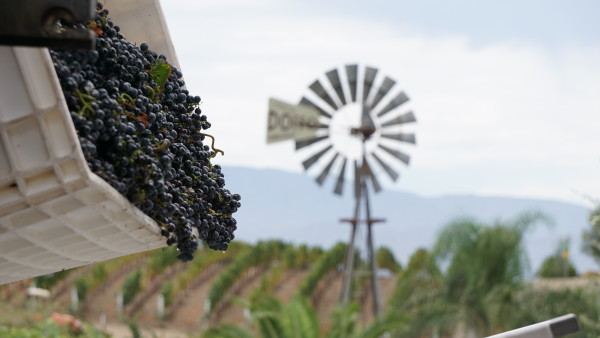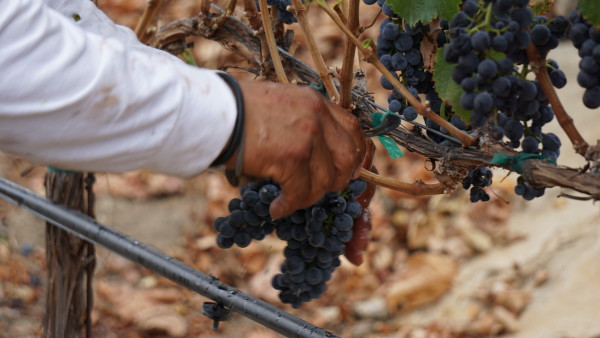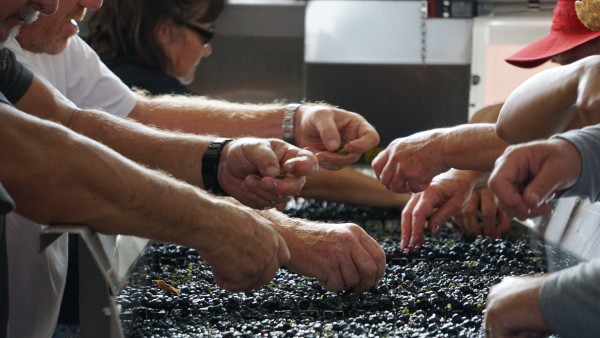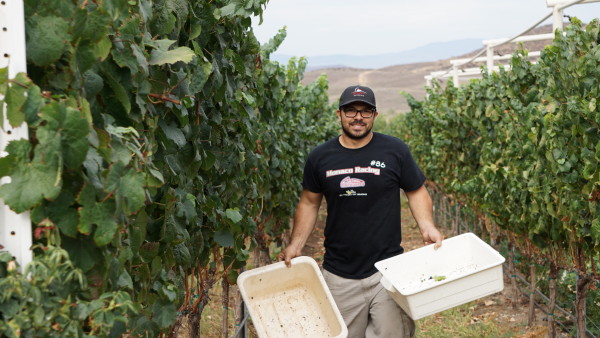If I had to summarize the 2015 growing season and harvest in one word, it would have to be “quirky.” This year’s growing season threw curve ball after curve ball at us. We faced unsettled spring weather, which caused grapes to shatter (a loose cluster during fruit set). Then, the ongoing effects of the drought, combined with consistently warm temperatures during the ripening period, all added to smaller tonnages come harvest.
As the temperatures warmed in early August, the harvest season started early and with a feverish pace. The first couple vineyards were harvested and it seemed like all the blocks were going to follow. Mother Nature had a different plan. We experienced some rainy days, which cooled things down. Rain can create its own set of problems, mostly inducing rot on the thin-skinned tight clustered grapes like Zinfandel. Thankfully, we responded quickly and managed to bring in our Zinfandel block with near perfect acids and sugar levels! Had we waited or been behind schedule, it could have been a disaster. The weather changed dramatically after the rains, the cooler temps slowed down the ripening of the remaining blocks, creating a lull on the crush pad. This cycle of cool then hot occurred a couple of times throughout this year’s harvest, creating the sensation that the season was dragging on and on.
The preliminary reports show that the 2015 California harvest is potentially one of the lowest-yielding vintages on record. Being a boutique winery, the smaller crop puts us in a great position. The lulls in the action gave way for our production team to take extra time with each and every fermentation, with the final product being spectacular. The wines have all been put into their selected new and used oak barrels and most are now finished with malolactic fermentation.
The big focus now in the vineyards is the preparation for the predicted El Niño season. We have begun seeding the vineyard rows with a proprietary blend of cover crop including barley and legumes. The idea is to get these cover crops sprouted before the heavy rains in order to minimize the disastrous effects of erosion. In the spring, the cover crops are left to go to seed and dry out before being flare-mowed leaving behind nutrient rich organic material for the vines to use during the growing season.
If you haven’t visited the wine country in the fall, you are missing out on spectacular views of red leaves on the vines. The cool weather is the perfect pairing for rich full bodied red wines. We look forward to seeing you soon!










